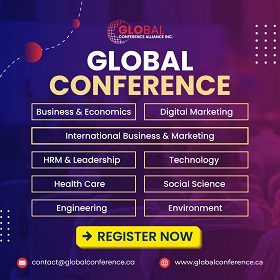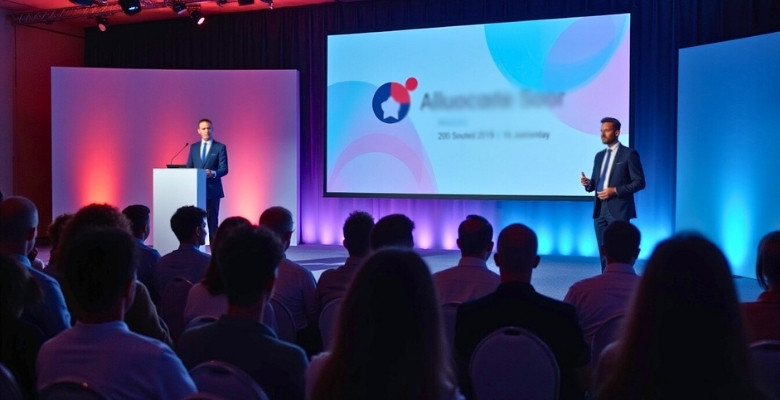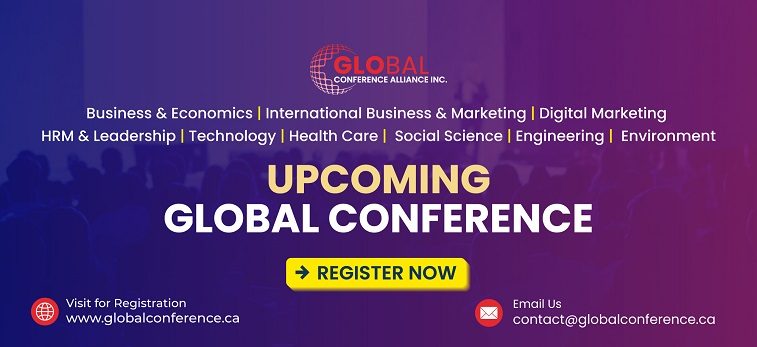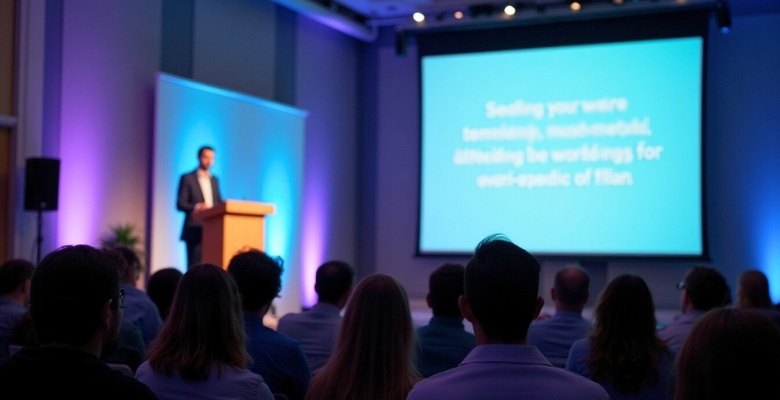A good start sets the mood for any event, and that’s why the first few words matter so much. When you welcome everyone at a big event such as a scientific conference, the day can feel special and memorable. If you are thinking about how to prepare the perfect welcome speech for scientific conference, then you are in the right place.
To prepare a welcome speech for a scientific conference, start with a friendly greeting. Say thank you to the guests and tell them the purpose of the event. Mention any special guests or speakers. Then, give a short idea of what will happen at the event. End by thanking everyone again and inviting the first speaker.
Do you want to know every step in detail? The following article will teach you everything you need to be aware of about a Welcome Speech for a Scientific Conference. So stay with us.
Welcome Speech for Scientific Conference
Welcome speeches are typically the first thing people hear at scientific conferences. It sets the mood and gives everyone an idea of what to expect. If done well, it makes the event feel more exciting and organized. Here’s how you can plan it step by step.
Greet the Audience
Start by saying hello in a warm and friendly way. You can thank everyone for coming and show that you’re happy to see them. This makes people feel comfortable and ready to listen. It’s also nice to say something small about how special the day is. Keep your words natural, like you’re talking to a group of friends.
Say the Purpose
Now, talk about why the conference is happening. You can mention the main topic or theme of the event. Try to keep this short and clear so everyone understands. You don’t need to use hard words—just tell people what the event is all about. This helps everyone feel more connected to the topic.
Mention the Guests
If there are any special guests, it’s good to welcome them by name. You don’t need to talk too much, just say a few kind words. This shows respect and makes them feel appreciated. You can also thank any speakers or experts who will share their ideas later. It shows that everyone’s role is important.
Talk About the Event
Give a small idea of what’s going to happen at the conference. For example, you can mention how upcoming conferences in Canada often include talks, fun activities, or group discussions. Don’t go into full detail—just give people a picture of what’s coming. This helps them know what to expect. Try to say it in an exciting way.
Share a Positive Message
A short, kind message makes a big difference. You can say something simple like “Let’s all enjoy learning together” or “Let’s share ideas and listen to each other.” It doesn’t have to be deep—just real and kind. This makes people feel good about being there. A little encouragement goes a long way.
Keep It Short
Try not to speak for too long. A welcome speech should be short and sweet. People are here for the event, so just give them a good start. Around two to three minutes is a good length. If it feels too long, try cutting out anything that sounds repetitive.
End With Thanks
Before you finish, thank the audience again for coming. Say a quick thank-you to the team or anyone who helped organize the event. This shows good manners and makes people feel respected. It’s a nice way to end your speech with warmth. Just keep it simple and honest.
Invite the First Speaker
The last part of your speech should lead into the next part of the event. You can say, “Now, let’s welcome our first speaker” or something similar. Make sure your tone sounds excited and polite. This gives a smooth flow to the program. It also shows that you’re done and it’s time to begin.
Why Does an Opening Speech Matter in a Scientific Conference?
Science conferences aren’t just about facts and ideas; they’re also about how things get started. The opening speech is the first voice everyone hears. It sets the feeling for the day and brings everyone together. Let’s explore why it really matters.
Makes People Feel Welcome
An opening speech is the first greeting people hear at the event. A warm and friendly tone can help guests feel relaxed and happy to be there. It’s a nice way to show that everyone’s presence is important. When people feel welcome, they are more likely to listen and take part. That’s why the start needs to feel kind and respectful.
Sets the Right Mood
The way a speech begins can shape the mood for the whole day. If the speech is calm and clear, it helps the audience feel the same. A good opening makes the event feel well-planned and smooth. It also shows that the event is something special. This helps people feel excited and ready to listen.
Tells What to Expect
A clear opening speech gives a small picture of what will happen during the event. It might mention the topic of the conference or the kinds of talks people will hear. This helps guests understand the purpose of the event right away. It also makes people feel more involved. Knowing what’s coming makes everyone feel more prepared.
Shows Respect to Guests
Thanking those who helped make the event possible is also part of a good speech. This includes the speakers, organizers, and special guests. Saying their names and showing kindness helps build a respectful tone. It makes guests feel valued and honored. That’s a nice way to start an event.
Connects Everyone Together
When people come from different places or groups, the opening speech helps bring them all together. It reminds everyone that they are part of the same event with a shared goal. Even if the crowd is large, the speech can help people feel like one team. It builds a small connection from the very start. That’s something words can really do.
Starts Things Off Right
The first few minutes of an event are important. If the speech is clear and friendly, it gives a strong and smooth start. It also helps people pay attention and feel ready. That way, the rest of the event goes better too. A good beginning always helps everything else.
How Long Should the Scientific Conference Welcome Speech Be?
Starting a scientific event on the right note means keeping your welcome speech short, friendly, and easy to follow. You don’t need long introductions or heavy information that might feel boring. Most good welcome speeches are about 2 to 5 minutes long. This gives enough time to greet people and create the right mood.
A short speech helps the audience stay focused and interested without getting tired or restless. It allows you to speak clearly without rushing or dragging on. Within those few minutes, say hello, thank the guests, and introduce the event. Make sure your words feel warm and show your excitement for what’s ahead.
Give a quick idea of what the conference is about and what people can expect during the sessions. A simple summary can help everyone feel more ready and involved from the beginning. No need to go into every detail, just the main point is enough. End your speech with thanks and a happy note to begin the event strong.
Is It Useful to Study Non-Science Welcome Speeches for Better Structure?
Yes, it is useful to study non-science welcome speeches when you want to improve the structure of your own scientific speech. Looking at different types of events gives you fresh ideas on how to begin and end smoothly. For example, a welcome speech for nursing conference often uses kind words and a simple structure that feels warm and real. You can use this style to make your own speech easier to follow and more welcoming.
Different fields have different ways of speaking, but the goal is always to connect with people and start things right. Watching how other events are opened helps you see what works well and what doesn’t. It shows how to keep things short, warm, and clear without losing meaning. You don’t need to copy them, but you can learn small tricks to make your speech better.
A science speech can still sound friendly while staying on topic if the structure is shaped in the right way. Studying other speeches helps with timing, tone, and the flow from one part to another. You’ll also see how to handle greetings, special guest mentions, and soft endings with ease. So yes, it’s a helpful step if you want your speech to feel natural and well-planned.
Sample Welcome Speech for a Scientific Conference That Leaves an Impression
With the right words, a welcome speech at a scientific conference can be fun and meaningful. The main goal is to make everyone feel happy and involved. Here is a sample welcome speech you can use as a guide for writing your own:
Sample 1: Warm and Friendly
Good morning, everyone!
I’m so happy to welcome you all to this exciting scientific conference. It’s great to see such curious and passionate minds in one place. Today is not just about facts and figures, it’s about sharing ideas, asking questions, and learning from each other. Let’s enjoy every talk, discussion, and moment together. Thank you for being here, and let’s make this a great day!
Sample 2: Formal and Respectful
Honorable guests, respected speakers, and dear participants,
It is a true honor to welcome you all to this year’s scientific conference. We gather here to explore new knowledge, share research, and build a strong community of science lovers. Thank you to our organizers, sponsors, and speakers for making this day possible. May today’s sessions inspire thought, discussion, and future discovery.
Sample 3: Clear and Professional
Good day to everyone present,
Welcome to our annual scientific conference. This event brings together experts, learners, and thinkers who all share a love for science. Over the course of this conference, we’ll hear new ideas, explore big questions, and grow as a community. We’re glad to have you with us—let’s begin with energy and focus.
Sample 4: Inspiring and Uplifting
Hello and welcome,
Science is a path of questions, ideas, and discovery—and today, we take another step forward together. This conference is more than just a meeting; it’s a chance to grow and spark something new. Whether you’re presenting or listening, your role matters. Let’s open our minds and make today unforgettable.
Sample 5: Simple and Heartfelt
Good morning,
It’s a pleasure to see so many bright and eager faces here today. This scientific conference is a space to learn, share, and connect. Let’s support each other, listen with interest, and enjoy every part of this event. Thank you for joining us—we’re glad you’re here.
What Should You Avoid in a Conference Welcome Speech?
You should know both what to say and what not to say when giving a welcome speech at a conference. Some small mistakes can make the speech feel too long or unclear. A good speech should feel light, warm, and easy to follow. Let’s look at some simple things you should avoid when giving one.
Speaking Too Long
Talking for too long can make people lose interest, even if the speech starts well. A welcome speech should be short and focused. Two to five minutes is usually enough to share your message. If it goes on too long, people may stop paying attention. Always try to keep it clear and to the point.
Using Hard Words
Big or tricky words can confuse the audience, especially if they don’t match the tone of the event. It’s better to use simple, friendly language that everyone understands. You don’t need to sound very smart to sound respectful and kind. When people understand you, they enjoy listening more. A clear message always feels better than fancy words.
Talking Without a Plan
If you speak without planning, your speech can sound messy and confusing. It might jump from one topic to another without order. A short outline helps keep things smooth and easy to follow. Even a few points written down can make a big difference. A planned speech sounds more thoughtful and calm.
Forgetting to Welcome
Some people start talking right away and forget to say a proper welcome. That small part is very important and sets the tone. A simple “welcome” makes guests feel included and happy. Without it, the speech feels cold and rushed. Always begin by warmly greeting everyone.
Ignoring the Theme
If your speech doesn’t match the theme of the event, it may feel out of place. It’s good to mention the topic or idea of the conference. Just a few lines about it can help everyone connect. Ignoring it makes the speech feel less useful. The theme helps bring everyone together.
Give Less Valuable Examples
Examples help people understand, but weak or unrelated ones can confuse the message. Don’t share stories or facts that don’t match the topic. For example, using something like an international conference welcome speech at a small local event may feel out of place. Try to use examples that fit the theme and add meaning. Good examples make your message stronger and easier to remember.
Not Thanking People
A welcome speech should also include a quick thank-you. Forgetting to thank the speakers, guests, or organizers can feel impolite. Even a short thank-you shows respect and kindness. People feel more valued when they hear their efforts are noticed. Always end or include thanks in a gentle way.
Sounding Too Serious
Too heavy a tone can make the audience tense or bored. You don’t have to be funny, just friendly. A small smile or a kind tone can make the speech feel warm. Sounding too serious at the start can make people feel nervous. A light tone helps everyone relax and enjoy.
Frequently Asked Questions
If you still have questions about how to prepare, deliver, or improve your welcome speech, this section is for you. These FAQs cover more helpful tips and extra details that haven’t been discussed yet. Let’s explore what else you might want to know:
What Tone Should You Use in a Scientific Welcome Speech?
The tone of your speech should be warm, respectful, and clear. You don’t need to sound too formal or too casual. Speak in a friendly way that makes everyone feel included. A natural and polite tone always works well at science conferences.
What Is the Best Time to Deliver a Welcome Speech?
It’s best to give the welcome speech at the beginning of the event, before any other session begins. It sets the tone, brings focus, and helps everyone settle in. Starting early ensures everyone hears it and feels involved from the beginning. This helps make the event feel organized.
Should the Speech Be Memorized or Read?
It’s okay to read parts of your speech, but it’s best to sound natural. You can write it down and practice enough times to remember the main parts. Glancing at notes is fine, as long as you keep a good flow. Practice helps you speak with confidence.
Can Humor Be Added to the Welcome Speech?
Yes, adding light humor can make the speech feel more friendly and engaging. However, it must match the tone of the event. Avoid jokes that may confuse or offend anyone. A simple smile or a funny moment can help the audience feel more relaxed.
How Should You Practice Your Welcome Speech?
Practicing out loud is the best way to get comfortable with your speech. Try reading it slowly in front of a mirror or a friend. Focus on speaking clearly and at a calm pace. The more you practice, the more confident you’ll feel.
Can You Use Personal Experiences in the Speech?
Yes, personal experiences can make your speech more relatable and real. Just keep them short and linked to the event. For example, you could share how excited you were at your first conference. This helps create a friendly and honest connection with the audience.
How Do You Handle Nervousness Before Speaking?
Feeling nervous is very normal, even for experienced speakers. Take deep breaths before going on stage and speak slowly. Practicing your speech a few times helps calm your nerves. Remind yourself that everyone is here to listen and enjoy, not judge.
Can the Speech Include a Quote?
Yes, using a short and simple quote can make your speech more thoughtful. Choose one that matches the theme of the conference. Make sure it’s easy to understand and meaningful. Don’t use too many quotes—just one good one is enough.
What Should You Wear When Giving a Speech?
Wear clothes that match the type of event. A scientific conference usually calls for neat, smart clothing—nothing too flashy or too casual. Looking presentable helps you feel more confident. Comfortable clothes also let you move and speak more naturally.
Is It Okay to Mention Sponsors or Partners?
Yes, if the event has sponsors or supporting partners, it’s good to thank them in the welcome speech. Just a short, kind mention is enough. It shows appreciation and respect for their help. Don’t go into details—just keep it simple and polite.
Bottom Line
A strong opening can shape the mood of the entire event, and that’s exactly why your welcome words matter more than you think. Whether it’s a large crowd or a small gathering, speaking with heart and clarity makes all the difference. People remember how they felt at the beginning, so give them a reason to smile and stay engaged.
When you prepare your welcome speech for scientific conference with warmth, purpose, and simplicity, your message becomes clear and memorable. It doesn’t have to be perfect—it just needs to feel real. Short, kind, and focused speeches leave a better impression than long, confusing ones.
As soon as you know what to say and what to skip, you’ll be ready to take the stage with confidence. Let your words welcome, inspire, and bring everyone together from the very first moment.








